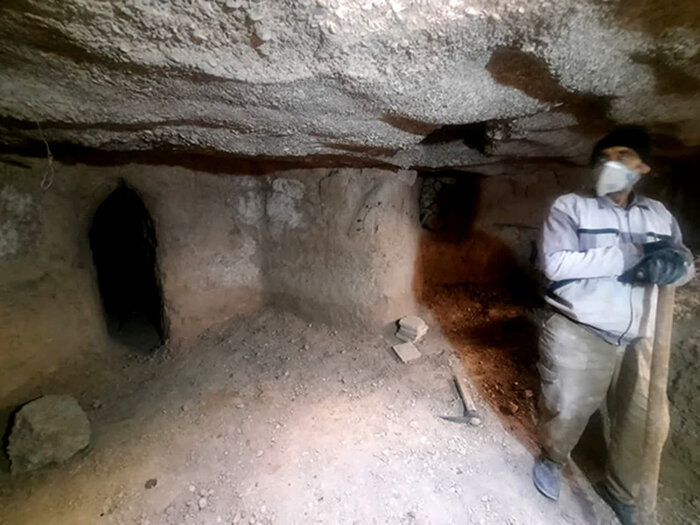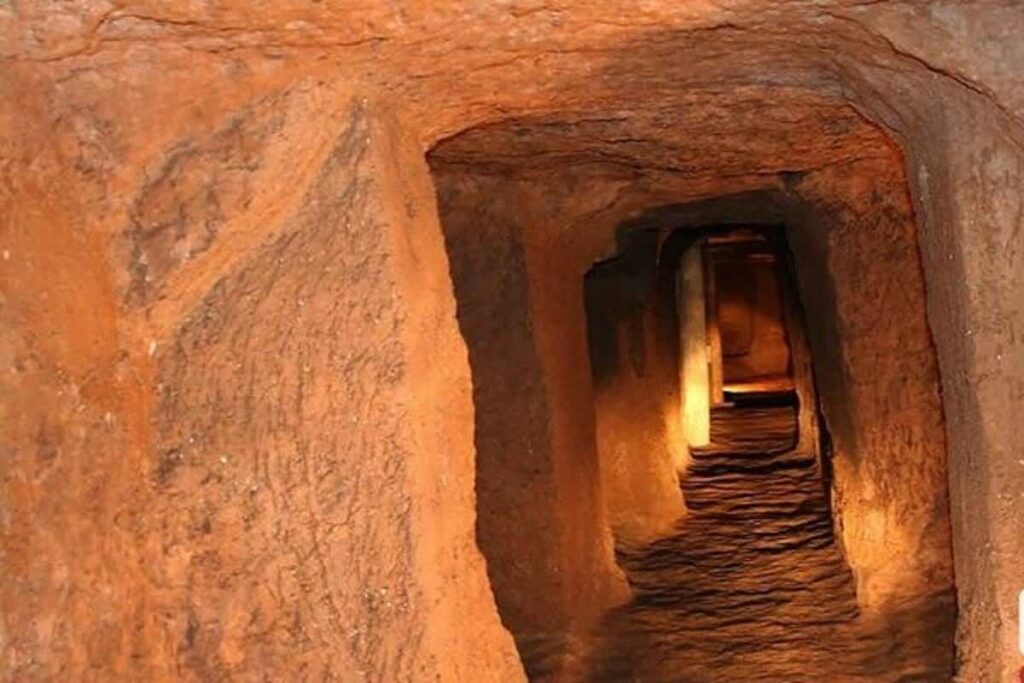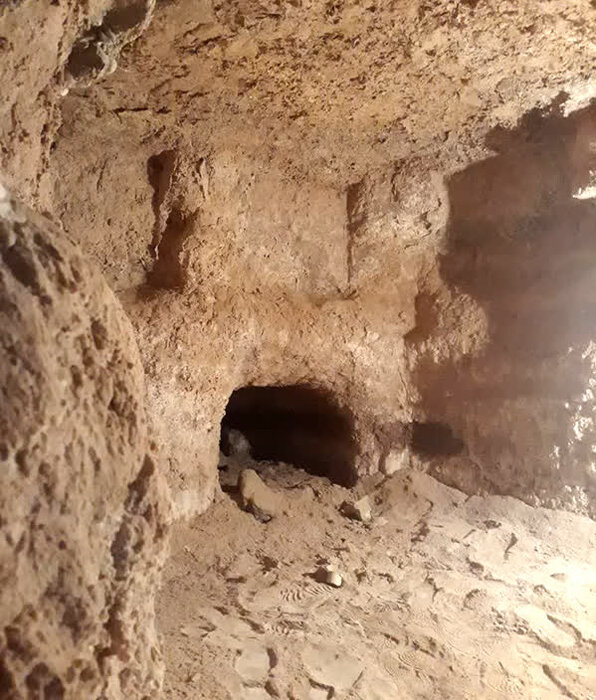
Ancient underground city discovered in Abarkuh, Iran
Researchers have uncovered an underground city beneath five historic houses in Abarkuh, a city in Iran’s Yazd Province. Located about 140 kilometers southwest of Yazd, Abarkuh plays a key role in the “golden triangle” formed by Shiraz, Yazd, and Isfahan. This strategic location has made it an important settlement throughout history.
The research team continues to explore the possibility of more underground structures in Abarkuh, including a carved stone waterway. These discoveries provide valuable insights into ancient building methods, water management, and daily life. The findings highlight the need for further exploration and preservation of Abarkuh’s historical heritage.
Abarkuh Governor Hossein Hatami announced the discovery in an interview. He explained that the underground city likely served purposes such as accessibility, security, and water transfer. Historical aerial photographs show that residents built their homes on rocky foundations in the past.
Hatami mentioned that ancestors transformed the areas between these rocky foundations into gardens. They designed pathways for easy access and daily activities beneath these rocky sections.
📣 Our WhatsApp channel is now LIVE! Stay up-to-date with the latest news and updates, just click here to follow us on WhatsApp and never miss a thing!!

Hatami emphasized that small stone chambers beneath the rocky foundations of Abarkuh’s historic houses had practical uses. This situation has led to ongoing research and the discovery of an underground settlement.
Researchers also found a beautifully crafted stone aqueduct, which played a crucial role in managing the town’s water supply. The stones used in this waterway resemble those found in Qajar-era structures in the region.
The Qajars were a Turkmen tribe whose ancestral lands are now part of present-day Azerbaijan. After the death of Muhammad Karim Khan Zand in 1779, Agha Mohammad Khan, the leader of the Qajar tribe, sought to reunite Iran. He successfully defeated various rivals and established the Qajar dynasty.
Hatami explained that the ancient inhabitants built steps leading to the houses along the water channels. This design made it easier to access the water systems and manage water flow effectively.
The water flowing through these corridors cooled the underground areas, creating a peaceful refuge during hot summer months. Over time, larger rooms likely served as resting areas or summer homes for the town’s residents.
This underground complex may have also provided shelter during times of war or foreign invasions.

Hatami stated that investigations revealed about 60 hectares of Abarkuh’s total historical area of 170 hectares are dedicated to these channels. After some qanats dried up, many constructions were built in the city, directing wastewater into these underground pathways. Unfortunately, this has limited the complete reopening of the entire route, and currently, only a portion has been excavated.
To date, researchers have identified 400 historical sites in the Abarkuh region, with 147 registered as national heritage sites. Among these are 129 immovable properties and 12 intangible cultural heritage sites.
Archaeologists remain determined to overcome the challenges they face while investigating the underground city in Abarkuh. This discovery offers valuable insights into the creativity and resilience of the region’s ancient inhabitants.
Famous for its historical significance and architectural wonders, including a 4,000-year-old iconic cypress tree, Abarkuh strengthens its status as a treasure of Iranian heritage. The discovery of this underground city enriches the town’s cultural narrative and highlights its importance within the broader context of Iran’s historical landscape.
Cover Photo: IRNA
You may also like
- A 1700-year-old statue of Pan unearthed during the excavations at Polyeuktos in İstanbul
- The granary was found in the ancient city of Sebaste, founded by the first Roman emperor Augustus
- Donalar Kale Kapı Rock Tomb or Donalar Rock Tomb
- Theater emerges as works continue in ancient city of Perinthos
- Urartian King Argishti’s bronze shield revealed the name of an unknown country
- The religious center of Lycia, the ancient city of Letoon
- Who were the Luwians?
- A new study brings a fresh perspective on the Anatolian origin of the Indo-European languages
- Perhaps the oldest thermal treatment center in the world, which has been in continuous use for 2000 years -Basilica Therma Roman Bath or King’s Daughter-
- The largest synagogue of the ancient world, located in the ancient city of Sardis, is being restored











Leave a Reply